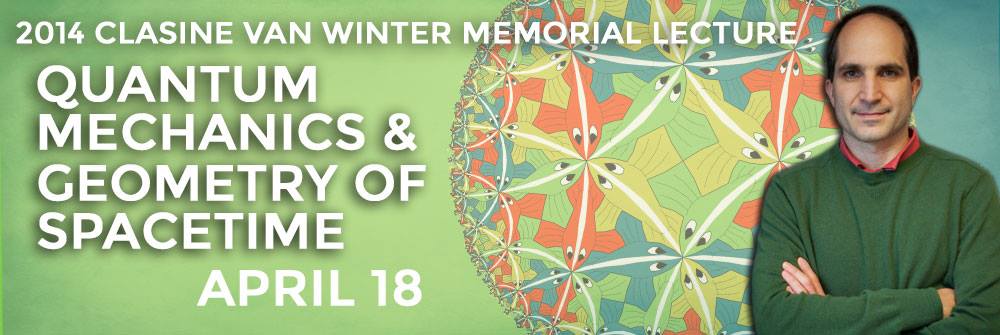
by Keith Hautala
(April 17, 2014) — Physicist Juan Maldacena of the Institute for Advanced Study will visit the University of Kentucky Friday and will deliver the 2014 van Winter Memorial Lecture in Mathematical Physics.
The lecture, on "Quantum Mechanics and Geometry of Spacetime,” will take place from 3:30-4:30 p.m. Friday, April 18, in Room 155 of the Chemistry-Physics Building.
Maldacena is the leading string theorist of his generation. His 1998 discovery of the AdS/CFT correspondence set off a revolution in string theory and has found applications in many areas of physics and mathematics.
His work since then has included groundbreaking discoveries in theoretical particle physics, cosmology, and quantum gravity. He was awarded a 1999 MacArthur Fellowship, the 2007 APS Dannie Heineman Prize, the 2008 Dirac Medal and the 2012 Fundamental Physics Prize, and he is a member of the National Academy of Sciences.
In his lecture, Maldacena will discuss the role of quantum mechanics in determining the geometry of spacetime. In particular, he will explain how quantum fluctuations can determine the large-scale structure of the universe.
Maldacena's abstract states: "In some model universes, we can give an alternative description of the physics in terms of a theory of particles that lives on its boundary. This implies that the geometry is an emergent property. Furthermore, entanglement plays a crucial role in the emergence of geometry. Large amounts of entanglement are conjectured to give rise to geometric connections, or wormholes, between distant and non-interacting systems."The van Winter Memorial Lecture honors the memory of Clasine van Winter, who held a professorship in the Department of Mathematics and the Department of Physics and Astronomy from 1968 to her retirement in 1999. Professor Van Winter specialized in the study of multiparticle quantum systems; her contributions include the Weinberg-van Winter equations for a multiparticle quantum system, derived independently by van Winter and Professor Steven Weinberg, and the so-called HVZ Theorem, which characterizes the essential spectrum of multiparticle quantum systems. She died in October of 2000.
